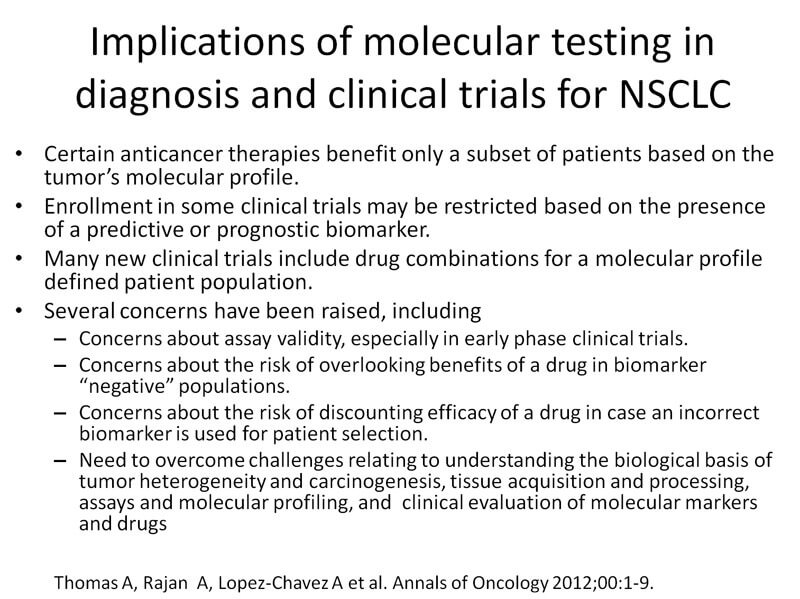 | . | Step 9 of 41 |
 |
Clinical Stem 3
A patient with right upper lobe adenocarcinoma progressing on biomarker-directed therapy
A patient with right upper lobe adenocarcinoma progressing on biomarker-directed therapy
Answer A
Studies demonstrate evidence of intra-tumoral heterogeneity with respect to mutations, and reports show discordance between the primary lesion and nodal metastases. It is not clear whether the potential for discordance should affect decisions on which specimen to test. In practice, biopsy of the most rapidly growing tumor is usually performed because it presumably contains the most biologically aggressive genetic alterations.The CAP/IASLC/AMP guideline states that either the primary or metastatic sites are acceptable for molecular testing.


Given the importance of acquiring sufficient and adequate tissue for molecular analysis, repeat bronchoscopic biopsy, or lymph node and tumor biopsies by mediastinoscopy or VATS may be warranted outside the staging setting.
Click here to download supplement materials (1)
Click here to download supplement materials (2)
References:
- Chen ZY, Zhong WZ, Zhang XC, et al. EGFR mutation heterogeneity and the mixed response to EGFR tyrosine kinase inhibitors of lung adenocarcinomas. Oncologist. 2012;17(7):978-85.
- Gerlinger M, Rowan AJ, Horswell S et al. Intratumor heterogeneity and branched evolution revealed by multiregion sequencing. N Engl J Med. 2012; 366(10):883-92.
- Monaco SE, Nikiforova MN, Cieply K, et al. A comparison of EGFR and KRAS status in primary lung carcinoma and matched metastases. Hum Pathol. 2010;41:94?102.
- Kalikaki A, Koutsopoulos A, Trypaki M, et al. Comparison of EGFR and K-RAS gene status between primary tumours and corresponding metastases in NSCLC. Br J Cancer. 2008;99:923?929.
- Han HS, Eom DW, Kim JH, et al. EGFR mutation status in primary lung adenocarcinomas and corresponding metastatic lesions: discordance in pleural metastases. Clin Lung Cancer. 2011;12:380?386.







